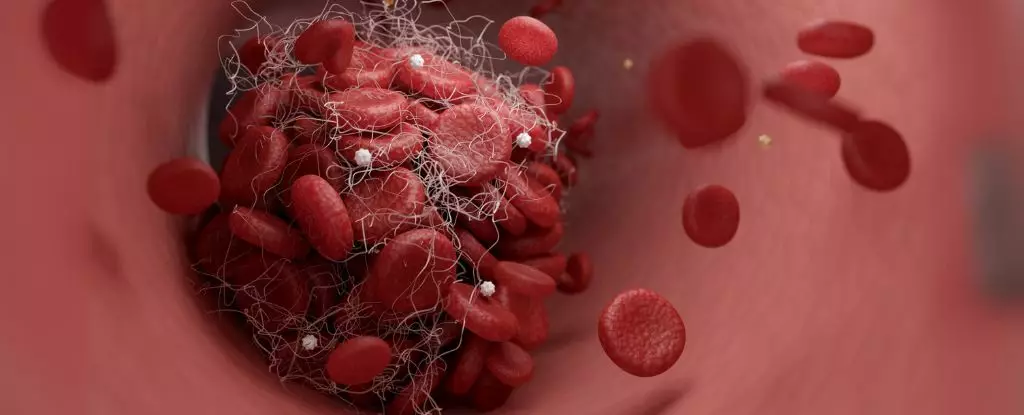Stroke remains one of the most pressing public health challenges today, hampering lives and tearing families apart. Disturbingly, the incidence of stroke is not merely limited to the elderly; younger adults are also facing increased risks. The pervasive lack of awareness surrounding stroke risk factors is alarming and unacceptable. As someone who transitioned from neurocritical care nursing to stroke research, I have seen first-hand the devastating consequences of ignorance. It’s high time we elevate our understanding of stroke, its implications, and the essential measures necessary to prevent it.
The Growing Stroke Epidemic Among Younger Adults
Traditional perceptions that stroke is predominantly an older person’s affliction are outdated. In recent years, research indicates that the incidence of strokes amongst adults under 55 is on the rise. Factors that once appeared to be limited to older demographics—like hypertension, obesity, and smoking—are becoming alarmingly prevalent in younger populations. Ignoring this shift could exacerbate an already critical public health emergency. Young adults are being impacted at alarming rates, a trend that must be addressed urgently.
What’s behind this trend? Factors range widely, from lifestyle choices such as excessive alcohol consumption and drug use to unhealthy eating habits. Stigmatizing conversations surrounding these behaviors often prevent meaningful change, leaving young adults unaware of their risks. It’s essential to shed light on these issues and facilitate open discussions over coffee or during community health initiatives. If we don’t change the narrative, the consequences could be catastrophic.
Unmasking the Modifiable and Non-Modifiable Risk Factors
While certain risk factors for strokes are beyond one’s control—such as genetics, age, and sex—many pivotal elements can be changed. It’s important to recognize that not everyone’s financial situation allows them access to quality healthcare, and societal inequalities only worsen stroke risks. Individuals with lower socioeconomic status often grapple with lifestyle-related health risks and are less likely to receive adequate healthcare. This systemic disparity can perpetuate the cycle of ignorance and health decline, ultimately leading to higher incidences of strokes.
Our health systems must prioritize educating all demographics about risk factors. Everyone should know they can take action against preventable strokes. Too often, stroke prevention appears as a daunting checklist. However, small, consistent lifestyle modifications can collectively lead to significant health benefits.
Combatting Stroke: 8 Essential Lifestyle Changes
1. Ditch the Cigarettes: Ignition leads to extinction—at least that’s how it feels for the vascular system when it faces the destructive effects of smoking. Smokers are twice as likely to suffer a stroke compared to non-smokers, emphasizing the necessity of quitting. Health campaigns must target young smokers with tailored messages that resonate and encourage timely action.
2. Keep Blood Pressure in Check: Hypertension is a silent killer. Regular monitoring should not be reserved for the elderly; everyone over the age of 18 should be vigilant. Knowing one’s numbers can foster a sense of agency in preventing serious health events.
3. Control Cholesterol Levels: Elevated cholesterol, particularly when combined with hypertension, sharply increases stroke risk. Comprehensive health education must stress the importance of a balanced diet and regular check-ups for cholesterol management.
4. Monitor Blood Sugar Levels: Poor blood glucose control is a significant contributor to vascular damage. Individuals, especially those with familial diabetes histories, must engage in preventive strategies that encompass diet, exercise, and stress management.
5. Weight Maintenance: Weight plays an undeniable role in stroke risk. Emphasizing the importance of a balanced lifestyle can empower individuals to break free from obesity-related dangers. Society must foster environments that promote healthy living.
6. Adopt the Mediterranean Diet: This isn’t merely a trend; it’s a time-tested nutrition approach that supports heart health and lowers stroke risk. Community programs should endorse this dietary lifestyle, demonstrating its benefits through engaging cooking classes and nutrition workshops.
7. Prioritize Sleep: Sleep may be the undervalued pillar of health. Insufficient or excessive sleep can raise stroke risk, yet discussions about sleep health are often overlooked. We must recognize sleep as integral to our overall well-being and advocate for healthy sleep habits.
8. Stay Active: Sedentary lifestyles are a stroke risk. The guidelines to engage in moderate physical activity are accessible; spreading this message widely is crucial. Communities should offer ample opportunities for physical engagement, effectively tearing down barriers to fitness.
The challenge of stroke is both a personal and societal one. As the data illustrates, ignorance is a dangerous road leading to tragedy. These lifestyle changes, while seemingly simple, can have profound implications for preventing strokes. We must mobilize as a society to ensure that knowledge is disseminated widely, empowering individuals to take control of their health and destinies. Embracing this call to action isn’t just wise—it’s necessary.

